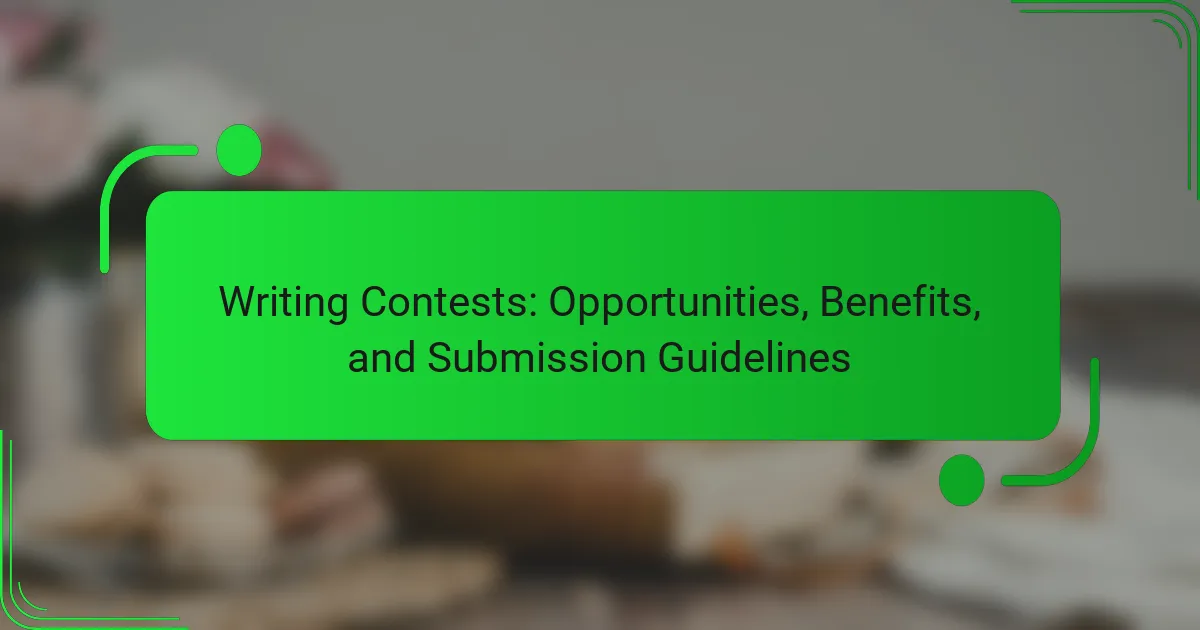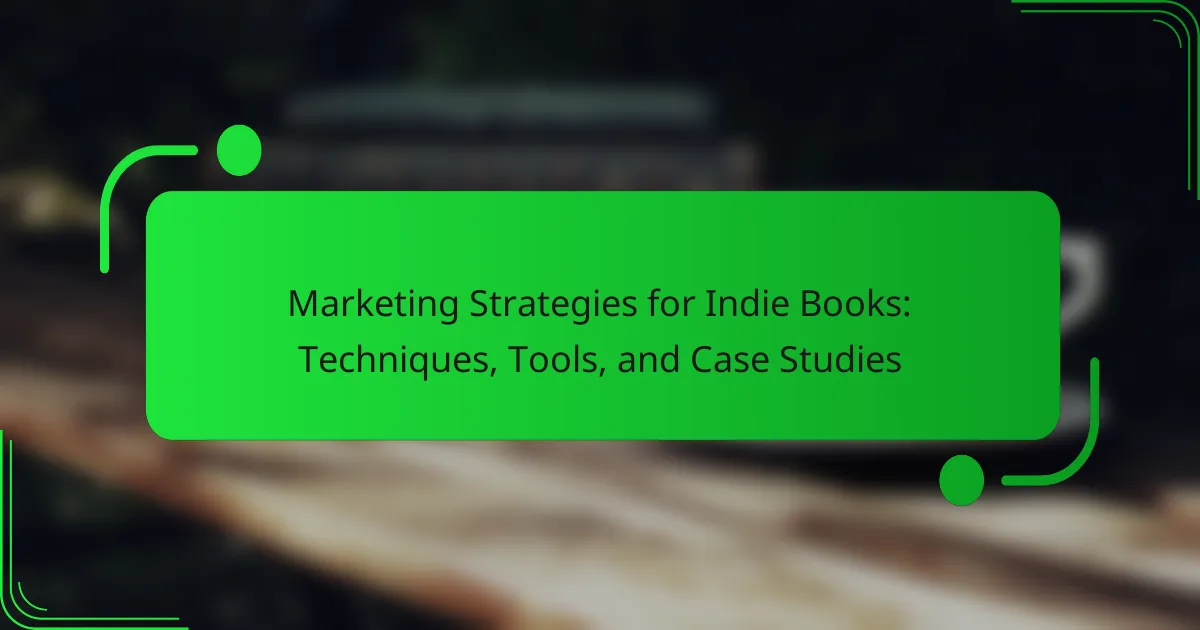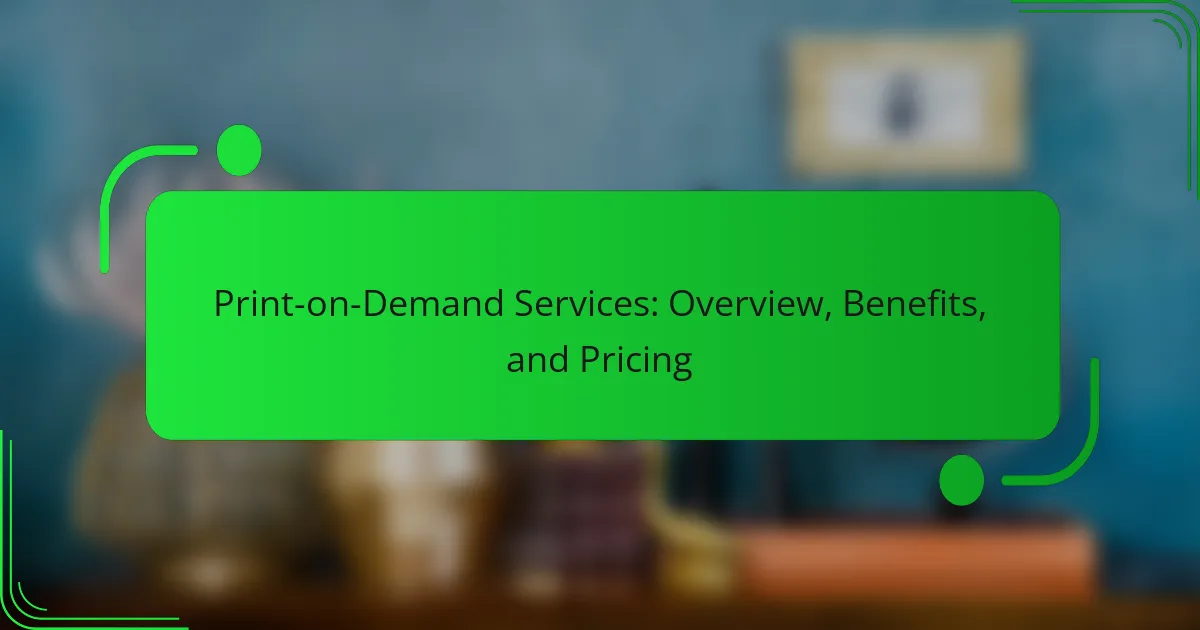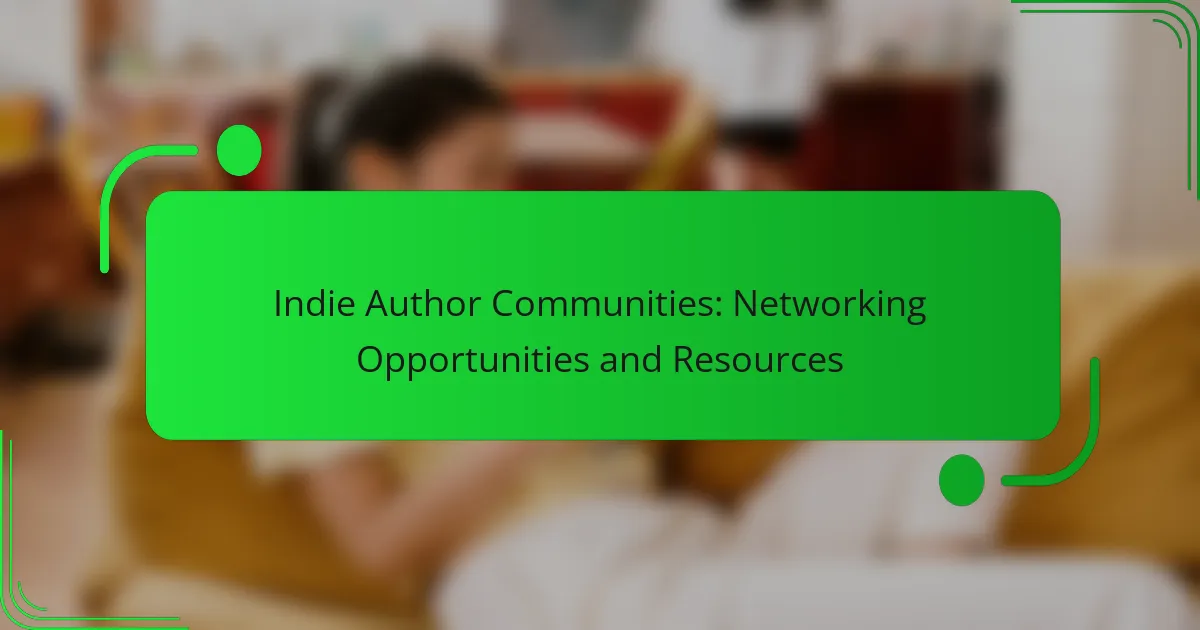Indie publishing platforms empower authors with greater creative control, higher royalty rates, and faster publication timelines. This article explores the benefits of these platforms, highlights essential features, and compares popular options like Reedsy, IngramSpark, and Draft2Digital. It also addresses common challenges faced by indie authors and offers guidance on selecting the right platform for success.
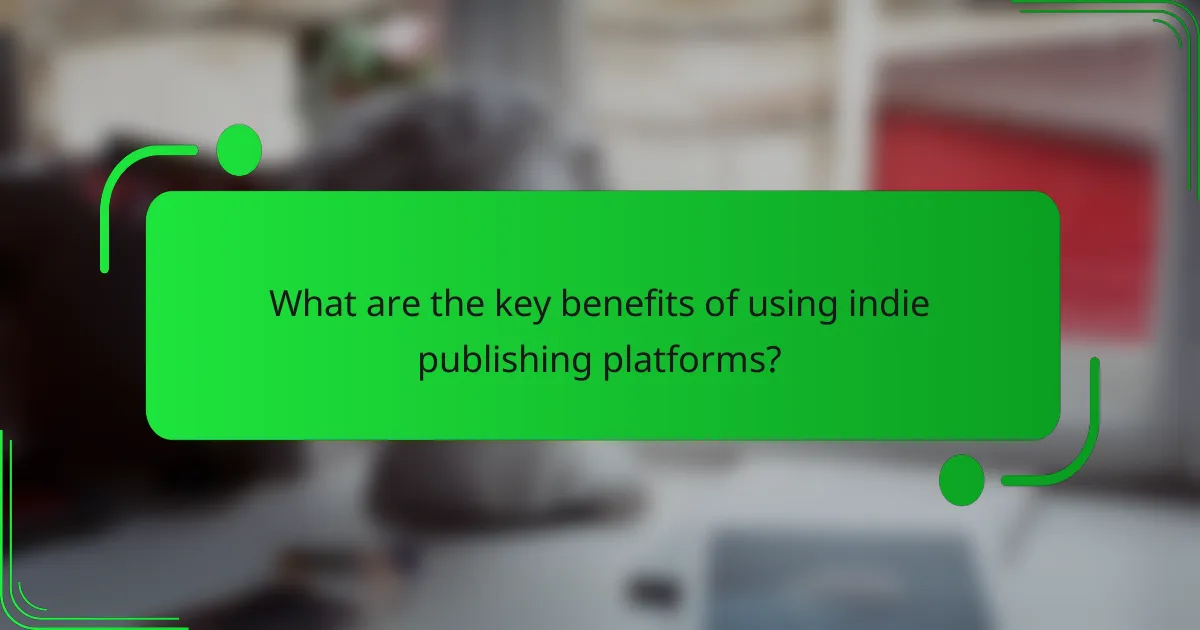
What are the key benefits of using indie publishing platforms?
Indie publishing platforms offer several key benefits, including greater creative control, higher royalty rates, and faster publication timelines. These platforms empower authors to publish their work without traditional gatekeepers, allowing for innovative content and niche targeting. Additionally, they provide valuable marketing tools and analytics to help authors reach their audience effectively.
How do indie publishing platforms enhance author control and creativity?
Indie publishing platforms significantly enhance author control and creativity by providing tools for direct engagement with readers and flexible content management. Authors retain ownership of their work and can make decisions regarding pricing, distribution, and marketing strategies. This autonomy fosters innovation, allowing for diverse storytelling methods and niche genres that traditional publishing may overlook. Additionally, real-time analytics empower authors to adapt their strategies based on reader feedback, further enhancing creative expression.
What financial advantages do indie publishing platforms offer?
Indie publishing platforms offer significant financial advantages by providing higher royalty rates, reduced upfront costs, and direct access to global markets. Authors retain more control over their earnings compared to traditional publishing. For instance, many platforms offer royalties ranging from 60% to 80%, while traditional publishers typically offer around 10% to 15%. Additionally, indie platforms eliminate the need for costly printing and distribution fees, allowing authors to maximize profits.
How do indie publishing platforms affect distribution and reach?
Indie publishing platforms significantly enhance distribution and reach for authors. These platforms provide wider access to global audiences through digital channels, reducing reliance on traditional publishing routes.
They often feature user-friendly tools for formatting and marketing, enabling authors to publish quickly and effectively. For instance, platforms like Amazon Kindle Direct Publishing offer extensive distribution networks, allowing titles to reach millions of readers.
Moreover, indie platforms typically allow authors to retain higher royalties compared to traditional publishers, incentivizing more writers to explore these avenues. This shift empowers authors with greater control over their work and marketing strategies.
As a result, indie publishing platforms play a crucial role in democratizing access to publishing, fostering diverse voices in literature.

What core features should you look for in an indie publishing platform?
Look for user-friendly interfaces, flexible pricing models, robust distribution options, strong marketing tools, and comprehensive analytics. These core features enhance your publishing experience and support your goals effectively.
Which tools are essential for formatting and design?
Essential tools for formatting and design in indie publishing include design software, editing tools, and layout applications. These tools enhance the visual appeal and readability of published works.
| Tool Type | Examples | Key Features |
|———————|——————————|————————————-|
| Design Software | Adobe InDesign, Canva | Templates, graphics, and layouts |
| Editing Tools | Grammarly, ProWritingAid | Grammar checks, style suggestions |
| Layout Applications | Scrivener, Vellum | Formatting options, export features |
| Collaboration Tools | Google Docs, Dropbox Paper | Real-time editing, sharing capabilities |
How do marketing and promotional features vary across platforms?
Marketing and promotional features vary significantly across indie publishing platforms. Each platform offers distinct tools and strategies tailored to its user base.
For example, Amazon Kindle Direct Publishing provides extensive reach through its marketplace, while platforms like Smashwords focus on distribution across multiple retailers. Additionally, platforms like Draft2Digital emphasize user-friendly formatting and promotional opportunities, such as promotional pricing.
Furthermore, some platforms offer unique features like built-in social media integration or email marketing tools, enhancing authors’ ability to connect with readers. Overall, the choice of platform can impact an author’s visibility and engagement strategy.
What types of support and resources are typically available?
Indie publishing platforms typically offer various support and resources including community forums, educational materials, and marketing tools. These resources help authors navigate the self-publishing landscape effectively.
1. Community Support: Access to forums and groups where authors can share experiences and advice.
2. Educational Resources: Workshops, webinars, and articles focused on writing, publishing, and marketing.
3. Marketing Tools: Features that assist in promoting books, such as social media integration and email marketing services.
4. Technical Support: Assistance with platform use, formatting, and distribution.
5. Financial Resources: Information on pricing strategies, royalties, and funding options.
6. Analytics: Tools to track sales performance and reader engagement.
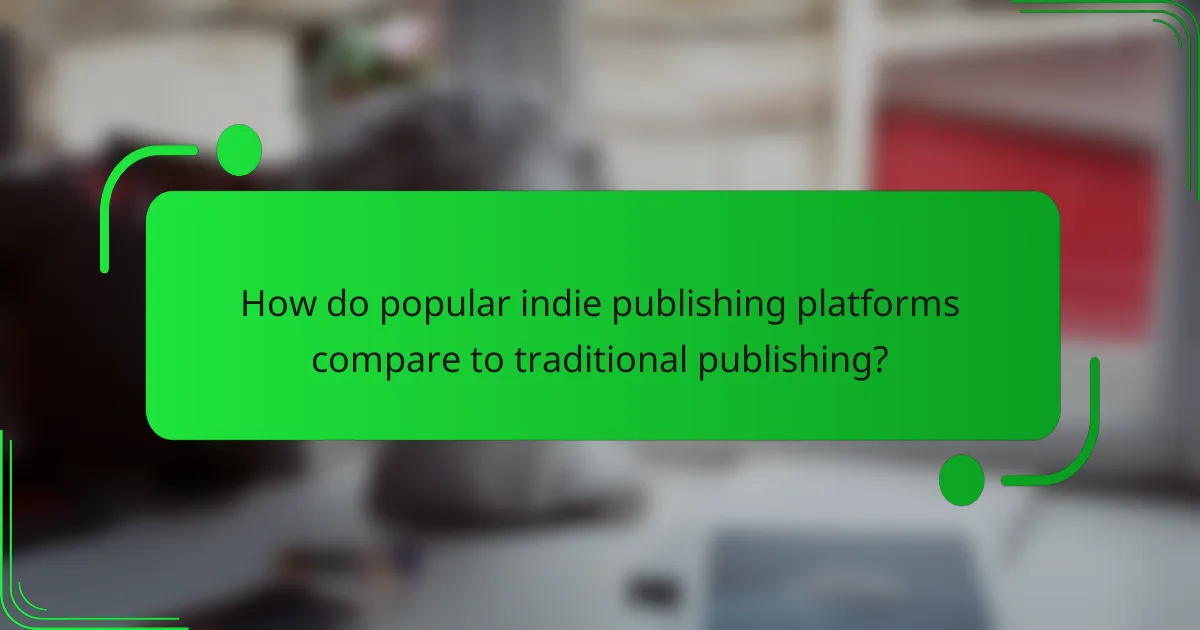
How do popular indie publishing platforms compare to traditional publishing?
Indie publishing platforms offer greater creative control and higher royalties compared to traditional publishing. Indie platforms enable authors to retain rights and publish quickly, while traditional publishing often involves lengthy processes and lower profit margins.
| Feature | Indie Publishing | Traditional Publishing |
|—————————–|————————–|————————–|
| Creative Control | High | Low |
| Royalties | 70-100% | 10-15% |
| Time to Publish | Weeks to Months | Months to Years |
| Rights Retention | Full | Shared |
| Marketing Responsibility | Author-Driven | Publisher-Driven |
| Accessibility | Open to All Authors | Selective |
What are the differences in royalties and earnings potential?
Indie publishing platforms differ significantly in royalties and earnings potential. Generally, self-publishing platforms offer higher royalty rates, often between 60% to 80%, compared to traditional publishing, which typically ranges from 10% to 25%.
| Platform Type | Royalty Rate | Earnings Potential |
|———————–|————–|————————-|
| Self-Publishing | 60% – 80% | High, based on sales volume |
| Traditional Publishing | 10% – 25% | Moderate, dependent on advance and sales |
| Hybrid Publishing | 30% – 50% | Variable, based on contract terms |
Self-publishing allows authors to retain more control over pricing and distribution, which can lead to increased earnings. Traditional publishing may provide upfront advances but often results in lower long-term earnings due to lower royalty rates.
How does the timeline for publishing differ between indie and traditional routes?
Indie publishing typically allows for faster timelines compared to traditional routes. Indie authors can publish their work immediately after completion, while traditional publishing often involves lengthy processes of editing, acquiring agents, and securing contracts, which can take months or years. This difference highlights the unique attribute of indie publishing’s speed, appealing to authors seeking quick market entry.
What are the pros and cons of self-publishing vs. traditional publishing?
Self-publishing offers greater creative control and higher royalty rates, while traditional publishing provides professional support and wider distribution. Each option has distinct advantages and drawbacks.
Pros of self-publishing include independence, faster publication timelines, and potential for higher profits, with authors keeping up to 70% of royalties. Cons involve the need for self-marketing, upfront costs, and lack of industry validation.
Traditional publishing pros include professional editing, marketing support, and access to established distribution channels. However, authors face lower royalties, longer timelines, and less creative control.
Choosing between the two depends on an author’s goals, resources, and willingness to navigate the publishing landscape independently.

What unique attributes distinguish various indie publishing platforms?
Indie publishing platforms are distinguished by unique attributes such as distribution reach, royalty rates, user interface, marketing tools, and community support. Each platform offers different strengths tailored to specific author needs. For example, some platforms excel in global distribution, while others provide superior marketing resources.
| Attribute | Platform A | Platform B | Platform C |
|——————–|——————–|——————–|——————–|
| Distribution Reach | Global | Regional | Niche |
| Royalty Rates | 70% | 60% | 50% |
| User Interface | Intuitive | Complex | User-friendly |
| Marketing Tools | Extensive | Limited | Moderate |
| Community Support | Strong | Average | Weak |
Which platforms cater specifically to genre writers?
Indie publishing platforms that cater specifically to genre writers include Wattpad, Inkitt, and Draft2Digital. These platforms offer unique features tailored to genre-specific audiences.
Wattpad allows writers to share stories and engage with readers, fostering a community around various genres. Inkitt focuses on discovering new talent in genres like romance, fantasy, and sci-fi, offering a data-driven approach to publishing. Draft2Digital provides easy distribution for genre writers, ensuring their works reach multiple retailers efficiently.
Each platform has its own strengths, making them suitable for different genre writing needs. Writers should consider their genre and audience when selecting a platform.
How do niche platforms serve specific author communities?
Niche platforms serve specific author communities by providing tailored tools and resources that cater to their unique needs. These platforms often feature user-friendly interfaces, community engagement options, and specialized marketing strategies. Authors benefit from direct access to their target audiences, fostering a sense of belonging and collaboration. Additionally, niche platforms often offer support services, such as editing and design, enhancing the overall publishing experience. This focused approach helps authors build their brand while connecting with like-minded individuals in their genre.

What challenges do authors face when using indie publishing platforms?
Authors face several challenges when using indie publishing platforms, including limited visibility, technical issues, and marketing difficulties. Many indie authors struggle to stand out in a crowded marketplace, leading to low sales. Technical challenges may arise from navigating the platform’s interface or formatting requirements. Marketing often requires additional skills, as authors must promote their work without the backing of traditional publishers. These obstacles can hinder an author’s ability to reach their target audience effectively.
What are common pitfalls in the indie publishing process?
Common pitfalls in the indie publishing process include lack of market research, poor editing, inadequate marketing strategies, and neglecting distribution channels. These issues can hinder visibility and sales. Understanding these challenges helps indie authors optimize their publishing efforts.
How can authors effectively manage their marketing efforts?
Authors can effectively manage their marketing efforts by leveraging indie publishing platforms that offer various benefits and features. These platforms provide tools for reaching target audiences, optimizing distribution, and enhancing visibility.
Key strategies include utilizing social media integration, engaging with readers through newsletters, and employing analytics to track performance. Indie platforms often feature user-friendly interfaces that simplify the marketing process, allowing authors to focus on content creation while effectively promoting their work.
Additionally, authors can compare different platforms based on attributes like royalty rates, distribution channels, and marketing support to select the best fit for their needs. Engaging with community forums on these platforms can also provide valuable insights and support from fellow authors.
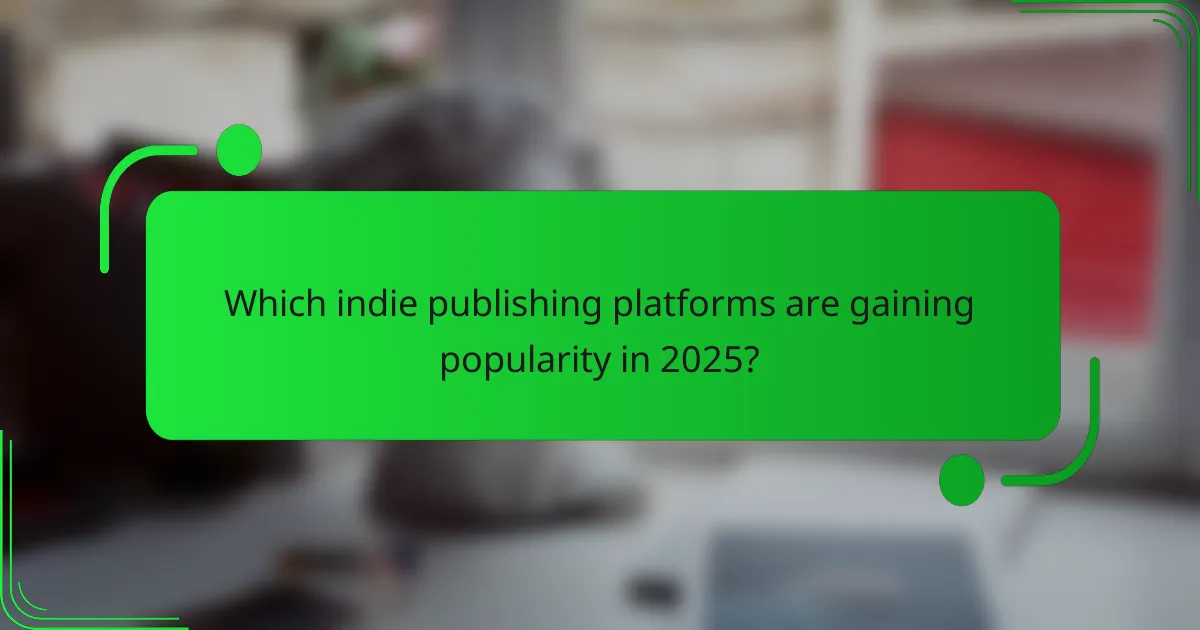
Which indie publishing platforms are gaining popularity in 2025?
Indie publishing platforms gaining popularity in 2025 include platforms like Reedsy, IngramSpark, and Draft2Digital. These platforms offer unique features such as user-friendly interfaces, extensive distribution networks, and robust support for authors. Reedsy stands out for its professional services, IngramSpark for its global reach, and Draft2Digital for its ease of use and comprehensive tools. As self-publishing continues to grow, these platforms are becoming essential for independent authors seeking to maximize their reach and revenue.
What emerging trends are influencing indie publishing choices?
Emerging trends influencing indie publishing choices include the rise of digital platforms, personalized marketing strategies, and community-driven content creation. Indie authors increasingly leverage social media for audience engagement and crowdfunding for financial support. The demand for diverse voices and niche genres is reshaping publishing decisions, encouraging unique storytelling. Additionally, advancements in technology, such as print-on-demand and e-book accessibility, enhance distribution options for indie publishers.
How are user experiences shaping platform development?
User experiences significantly shape platform development by influencing features, usability, and community engagement. Feedback from users drives improvements and innovations, ensuring platforms meet their needs. For instance, indie publishing platforms often adapt their tools based on user suggestions, enhancing the overall experience. This user-centric approach fosters loyalty and attracts new creators, ultimately impacting platform success.
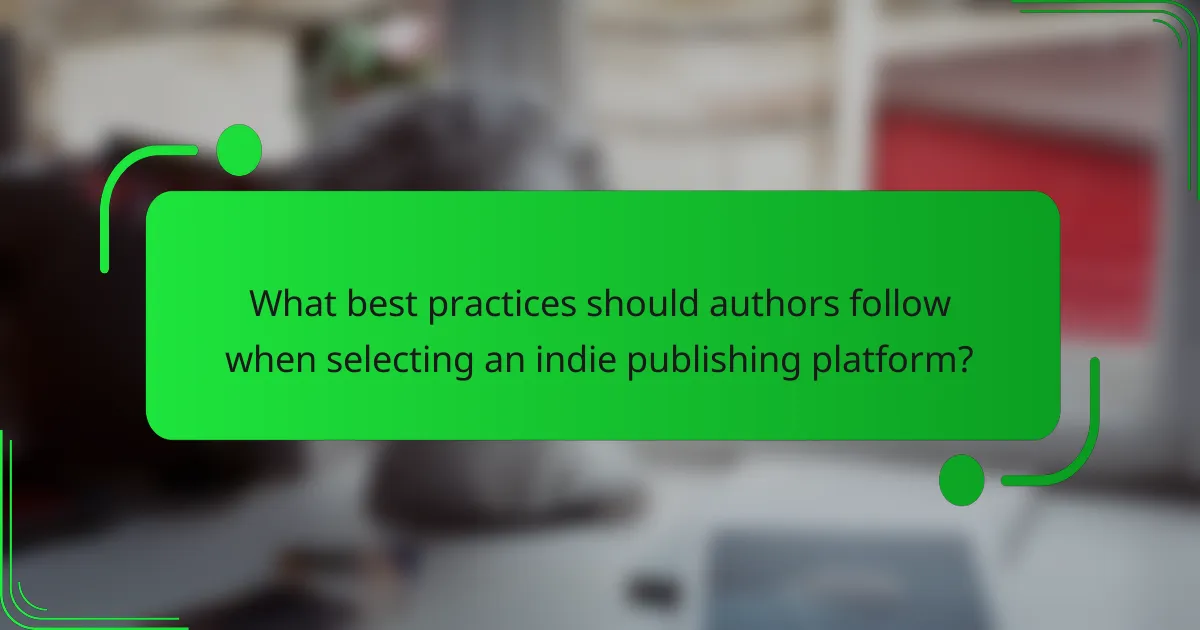
What best practices should authors follow when selecting an indie publishing platform?
Authors should prioritize user-friendly interfaces, royalty structures, and distribution options when selecting an indie publishing platform. Evaluating the platform’s reach is crucial for maximizing audience engagement. Additionally, consider the available marketing tools and support services to enhance visibility. Researching user reviews can provide insights into the platform’s reliability and effectiveness.
How can authors evaluate platform features against their needs?
Authors can evaluate platform features by aligning them with specific publishing needs. Assess aspects like distribution reach, royalty rates, user interface, and marketing tools.
Consider the following factors:
1. Distribution capabilities: Check which platforms offer the widest reach for your genre.
2. Royalty structures: Compare how much income you retain after sales.
3. User experience: Evaluate the ease of use for uploading and managing content.
4. Marketing support: Look for platforms that provide promotional tools or services.
5. Community engagement: Assess if the platform facilitates author-reader interaction.
These criteria help authors choose the best indie publishing platform tailored to their goals.
What strategies help optimize the publishing process on these platforms?
To optimize the publishing process on indie platforms, focus on effective planning, utilizing analytics, and engaging with communities. Streamlining workflows enhances efficiency and reduces time spent on revisions. Employ data-driven insights to understand audience preferences and improve content visibility. Collaborating with other authors fosters networking opportunities and expands reach.
Which common mistakes should authors avoid in indie publishing?
Authors should avoid common mistakes like neglecting marketing, overlooking editing, and ignoring platform guidelines. These errors can hinder success in indie publishing.
1. Skipping professional editing can lead to poor-quality work.
2. Failing to create a marketing plan limits visibility.
3. Not understanding platform features can result in missed opportunities.
4. Ignoring reader feedback can prevent growth and improvement.
5. Underestimating the importance of cover design affects first impressions.
